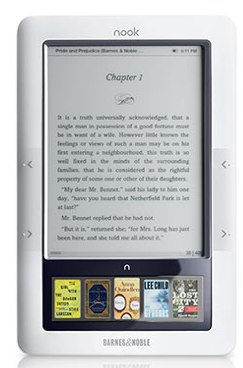
Barnes & Noble‘s recently appointed CEO (and former BN.com President) William Lynch this morning sent a long letter to all of its shareholders in connection with the company’s Annual Meeting, which will be held on September 28.
The company has been embroiled in litigation with private equity firm Yucaipa after the firm’s CEO Ron Burkle recently challenged the company’s stockholders rights plan. In the wake of a nasty proxy battle, B&N published the letter in an effort to detail its strategy to grow its business and to create shareholder value.
Interestingly, Lynch shares a lot of information and numbers about its current and expected future business.
You’ll have to forgive me if some of the information was already publicly disclosed in the past, but the letter provides a solid overview of where B&N stands today.
On physical books
Barnes & Noble expects an industry shake-out will come shortly, which will result in a consolidation of the physical book business, as there are increasingly fewer bookstore competitors on the market while other retail outlets (mass merchants, drug discounters, etc.) are expected to wind down their book-selling efforts.
The company expects the physical book market to contract significantly over the next four years, from approximately $21 billion to $19 billion. B&N adds that it hopes to grow its current share of the U.S book market (18%) to 20-25% over the next three years.
On digital books
Barnes & Noble in the letter says every metric they are tracking with regards to its digital business is exceeding its expectations. One year after kicking off its digital content sales efforts, the company already holds 20% of the digital trade book market, they claim.
Note: this is in fact a higher share than the 18% of the physical book market B&N claims to possess.
One reason why things are headed in the right direction for B&N in the digital space, according to them, is the fact that the company is able to “hand-sell and educate millions of people interested in digital reading, in-person every day” thanks to its network of physical retail stores.
Other reasons cited by the company are its digital catalog strategy and its management team (B&N boasts about the fact that they’ve attracted managers and technologists from companies such as Microsoft, Palm, Adobe, Cisco, Apple, Motorola, Travelocity and Time Warner Digital).
Barnes & Noble says it now offers a selection of over one million books that can be read on NOOK digital reading software (which supports over 400 mobile devices, including of course its own NOOK eBook Reader).
A few months ago, the company debuted the NOOK WiFi at $149, and a new lower price for its NOOK 3G model at $199.
Pursuing that strategy, Barnes & Noble says it expects to capture over 25% of the market for eBooks, eTextbooks and Digital Newsstand in total by 2013, projecting over $1 billion in digital revenue by that time.
On textbooks
Barnes & Noble currently has approximately 15% of the $12 billion U.S. textbook market, and the company plans to aggressively grow that share, although it didn’t project how much market share it hopes to have in the future.